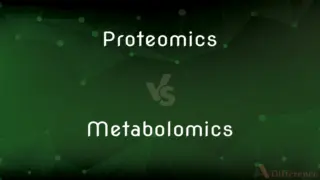Continental Crust vs. Oceanic Crust — What's the Difference?
Edited by Tayyaba Rehman — By Fiza Rafique — Published on November 8, 2023
Continental Crust is the land-based, thicker part of Earth's crust, while Oceanic Crust is thinner and lies beneath oceans.

Difference Between Continental Crust and Oceanic Crust
Table of Contents
ADVERTISEMENT
Key Differences
Continental Crust and Oceanic Crust are two primary types of Earth's crust, differing in location, composition, and age. Continental Crust primarily forms landmasses and is substantially older and thicker. In contrast, the Oceanic Crust forms the seafloor and is generally younger and thinner.
Predominantly granitic in composition, the Continental Crust has a complex and varied structure. Its thickness can vary considerably, often ranging from 30 to 50 km. The Oceanic Crust, on the other hand, is primarily basaltic. It's created at mid-ocean ridges and recycled into the mantle at subduction zones, making it dynamic and transient.
Continental Crust contains some of the oldest rocks found on Earth, with ages stretching back billions of years. This contrasts sharply with the Oceanic Crust, which is continually formed and destroyed over geologic timescales, rarely persisting beyond 200 million years.
The density also differentiates Continental Crust and Oceanic Crust. The former is less dense, which is why continents rise above sea level, while the latter, being denser, sits below sea level forming the ocean basins. These density differences drive many processes of plate tectonics.
To summarize, while both types constitute Earth's crust, Continental Crust is thicker, older, and forms land, whereas Oceanic Crust is thinner, younger, and forms the ocean floor.
ADVERTISEMENT
Comparison Chart
Location
Forms landmasses.
Forms the seafloor.
Composition
Mostly granitic.
Mostly basaltic.
Thickness
Generally 30-50 km.
Generally 5-10 km.
Age
Can be billions of years old.
Rarely older than 200 million years.
Density
Less dense.
Denser.
Compare with Definitions
Continental Crust
The thicker, granitic part of Earth's crust forming continents.
Mountains are predominantly found in the Continental Crust.
Oceanic Crust
The thinner, basaltic part of Earth's crust beneath oceans.
The Oceanic Crust is continually created at mid-ocean ridges.
Continental Crust
The Earth's crust that comprises landmasses.
Earthquakes can occur in both Continental Crust and oceanic regions.
Oceanic Crust
A major component of the seabed and deep ocean floor.
The Oceanic Crust is much younger than its continental counterpart.
Continental Crust
The less dense section of the Earth's outer shell.
The Continental Crust rises above the oceanic due to its lower density.
Oceanic Crust
The Earth's crust underlying ocean basins.
Subduction zones recycle the Oceanic Crust back into the mantle.
Continental Crust
A major component of continents and continental shelves.
The rocks in the Continental Crust can be billions of years old.
Oceanic Crust
The denser section of the Earth's outer shell.
The Oceanic Crust sits below sea level due to its higher density.
Continental Crust
The segment of crust predominantly made of granitic rocks.
Geologists study the Continental Crust to understand Earth's history.
Oceanic Crust
The segment of crust predominantly made of basaltic rocks.
The creation and destruction of Oceanic Crust are key to plate tectonics.
Common Curiosities
Can we find diamonds in Oceanic Crust?
Diamonds are primarily found in the Continental Crust, not in the Oceanic Crust.
Where is new Oceanic Crust formed?
New Oceanic Crust is formed at mid-ocean ridges.
Why do continents rise above the oceans?
Because Continental Crust is less dense than Oceanic Crust.
What causes the different densities between the two crusts?
Differences in mineral compositions and formation histories.
Why is Oceanic Crust younger than Continental Crust?
Because it's continuously created and destroyed, while Continental Crust is more stable.
Are there older rocks in Continental or Oceanic Crust?
Continental Crust contains some of the Earth's oldest rocks.
Why is Continental Crust primarily granitic?
Due to its origin and formation processes involving partial melting and differentiation.
Can islands be part of the Continental Crust?
Yes, some islands are extensions of the Continental Crust, while others are volcanic and part of the Oceanic Crust.
Which is thicker, Continental Crust or Oceanic Crust?
Continental Crust is generally thicker than Oceanic Crust.
What's the primary composition of Oceanic Crust?
Oceanic Crust is primarily composed of basaltic rocks.
Do the two crusts interact?
Yes, especially at convergent plate boundaries where they may collide or one may be subducted.
How is Oceanic Crust recycled?
Through subduction zones where it's pushed back into the mantle.
Is there life deep within Oceanic Crust?
Recent studies suggest microbes can exist deep in the Oceanic Crust, in the pores of rocks.
How do plate tectonics relate to the two crusts?
Both types of crust interact in plate tectonics, with Oceanic Crust often being subducted beneath Continental Crust.
Do earthquakes occur more in Continental or Oceanic Crust?
Earthquakes can occur in both, but many significant ones happen at boundaries involving Oceanic Crust.
Share Your Discovery

Previous Comparison
Bull Market vs. Bear Market
Next Comparison
Proteomics vs. MetabolomicsAuthor Spotlight
Written by
Fiza RafiqueFiza Rafique is a skilled content writer at AskDifference.com, where she meticulously refines and enhances written pieces. Drawing from her vast editorial expertise, Fiza ensures clarity, accuracy, and precision in every article. Passionate about language, she continually seeks to elevate the quality of content for readers worldwide.
Edited by
Tayyaba RehmanTayyaba Rehman is a distinguished writer, currently serving as a primary contributor to askdifference.com. As a researcher in semantics and etymology, Tayyaba's passion for the complexity of languages and their distinctions has found a perfect home on the platform. Tayyaba delves into the intricacies of language, distinguishing between commonly confused words and phrases, thereby providing clarity for readers worldwide.













































